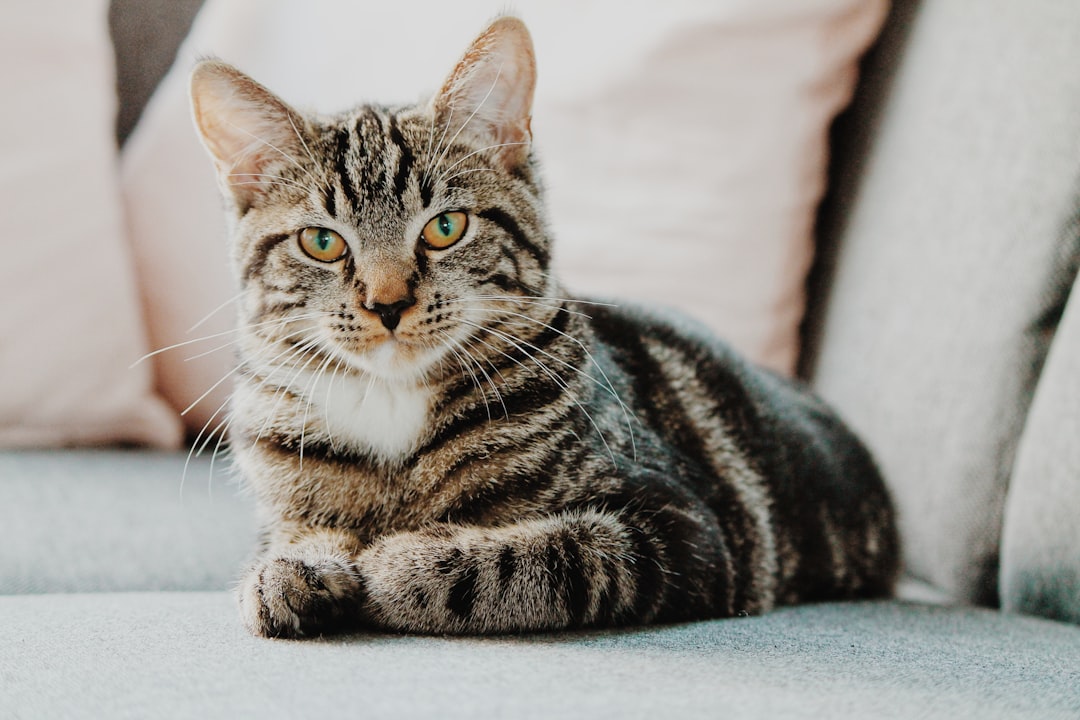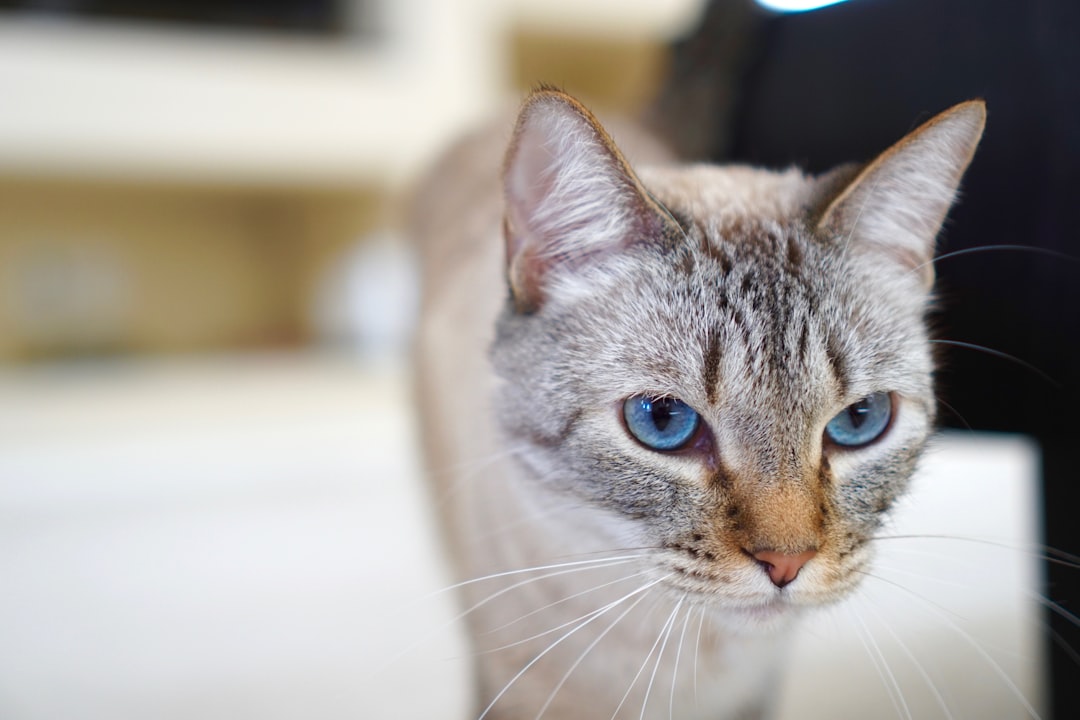Rodent ulcers in cats, commonly referred to as "rodent ulcer cat," can be concerning for pet owners. These lesions often indicate underlying health issues that require attention. Understanding the symptoms and causes of rodent ulcers is crucial for early diagnosis and effective management. Furthermore, knowing how to treat and prevent these ulcers can enhance your cat’s quality of life. In this blog post, we will explore the various aspects of rodent ulcers, including their identification, treatment options, and the significance of diet in maintaining your feline friend’s health.
What are Rodent Ulcers in Cats?
Rodent ulcers, scientifically known as eosinophilic granulomas, are common skin conditions affecting cats. These ulcers usually appear on the upper lip but may also develop on other areas, including the mouth and tongue.
Key Characteristics of Rodent Ulcers:
- Appearance: Typically raised, swollen lesions with a red or yellowish color.
- Location: Most often found on the upper lip, but they can exist elsewhere in the mouth.
- Size: They can vary in size, ranging from small bumps to larger, more ulcerated areas.
Importance in Feline Health:
- Rodent ulcers cause discomfort and can lead to eating difficulties if they interfere with the cat’s ability to groom or eat.
- These lesions may indicate underlying health issues, such as allergies or immune system problems.
Understanding the nature of a rodent ulcer in cats is crucial for prompt treatment and management. If you notice any unusual lesions on your cat, consult a veterinarian to ensure the proper diagnosis and care.

Symptoms of Rodent Ulcers
Recognizing the symptoms of rodent ulcers in cats is crucial for early intervention. These ulcers, characterized by distinctive lesions, can cause significant discomfort for your feline friend. Here are the common symptoms to look for:
Visible Lesions:
- Typically occurs on the lips, chin, or inside the mouth.
- Lesions appear as raised, reddened areas that may ooze or bleed.
Swelling and Inflammation:
- The affected area may become swollen and painful to the touch.
- Inflammation often leads to further irritation for your cat.
Behavioral Changes:
- Cats may exhibit changes in eating habits, often due to pain while chewing.
- They might be more withdrawn or exhibit signs of distress.
Frequent Grooming:
- Cats may groom the area excessively, leading to further skin irritation.
By being vigilant for these symptoms, you can prompt timely veterinary care for your cat. Addressing rodent ulcer cat issues early can improve your cat’s quality of life significantly. Remember, if you notice any of these symptoms, consult your veterinarian for a proper diagnosis and treatment plan.
Causes of Rodent Ulcers
Understanding the causes of rodent ulcers in cats helps pet owners manage and prevent this distressing condition. Various factors contribute to the development of a rodent ulcer cat may experience, including:
- Allergic Reactions: Some cats may develop rodent ulcers as a response to allergens in their environment or food.
- Infections: Bacterial or viral infections can trigger inflammation leading to ulcer formation.
- Stress and Anxiety: Psychological factors like stress may weaken a cat’s immune system, making them more susceptible to developing ulcers.
- Underlying Health Issues: Conditions such as feline immunodeficiency virus (FIV) or feline leukemia virus (FeLV) can predispose cats to rodent ulcers.
- Genetic Predisposition: Certain breeds are more prone to rodent ulcers, indicating a potential genetic factor.
By recognizing these causes, you can take proactive steps to minimize the risk of your feline friend developing a rodent ulcer cat. In doing so, you promote overall health and well-being for your beloved companion.
Diagnosing Rodent Ulcers in Felines
Diagnosing a rodent ulcer cat condition requires a systematic approach. Veterinarians often rely on multiple methods to confirm the diagnosis accurately.
Key Steps in Diagnosis:
- Physical Examination: A thorough examination of the affected area helps identify characteristic lesions that indicate rodent ulcers.
- Medical History: Gathering detailed information about your cat’s health, diet, and any behavioral changes assists in assessment.
- Skin Biopsy: A biopsy may be recommended if the ulcer appears atypical or there are concerns about other skin conditions. This involves taking a small tissue sample for microscopic evaluation.
- Blood Tests: These tests help rule out underlying causes, including allergies and infections, which may contribute to ulcer development.
Comparison of Diagnostic Techniques:
| Method | Purpose | Advantages |
|---|---|---|
| Physical Examination | Visual inspection of lesions | Quick and non-invasive |
| Medical History | Insight into overall health | Helps identify risk factors |
| Skin Biopsy | Confirms the nature of lesions | Accurate diagnosis |
| Blood Tests | Rules out systemic issues | Comprehensive health overview |
Prompt veterinary care is crucial for a rodent ulcer cat. Early diagnosis leads to better management and improves your cat’s quality of life.

Treatment Options for Rodent Ulcers
When it comes to managing a rodent ulcer in cats, several effective treatment options exist. Early intervention enhances the likelihood of full recovery. Here are some recommended treatments:
Topical Medications:
- Corticosteroid creams can reduce inflammation and promote healing.
- Antibacterial ointments help prevent secondary infections.
Oral Medications:
- Veterinary-prescribed steroids may address severe inflammation.
- Antibiotics can eliminate bacterial infections contributing to the ulcer.
Surgical Intervention:
- In persistent cases, veterinarians may perform surgical removal of the ulcerated tissue.
Dietary Management:
- A specialized diet rich in omega fatty acids supports skin health.
- Consider low-allergen foods; food sensitivities can exacerbate a rodent ulcer cat condition.
Behavioral Modifications:
- Reducing stress through environmental enrichment can aid healing.
- Avoid handling the affected area to prevent further irritation.
By discussing these options with your veterinarian, you can devise a tailored treatment plan. Always remember that regular check-ups will help in monitoring your cat’s progress with rodent ulcers.
Preventing Rodent Ulcers in Cats
Preventing rodent ulcers in cats requires a proactive approach that focuses on maintaining overall health and well-being. Here are several key strategies to help reduce the risk:
- Regular Vet Check-ups: Schedule routine veterinary visits for early detection of any health issues.
- Dental Care: Maintain good oral hygiene, as poor dental health can contribute to the development of rodent ulcers.
- Immune Support: Enhance your cat’s immune system with a balanced diet and appropriate supplements if recommended by your vet.
- Reduce Stress: Minimize stressors in your cat’s environment, as stress can trigger rodent ulcers.
Key Prevention Tips
| Action | Benefits |
|---|---|
| Routine Vet Visits | Early detection and treatment of conditions |
| Dental Hygiene | Prevents infections and potential ulcer formation |
| Proper Nutrition | Supports the immune system |
| Environmental Enrichment | Reduces stress and anxiety |
By implementing these strategies, pet owners can significantly decrease the chances of their feline friends suffering from rodent ulcer cat issues. A consistent approach to health management fosters a happier, healthier cat, free from the complications associated with rodent ulcers.
The Role of Diet in Managing Rodent Ulcers
Diet plays a crucial role in managing a rodent ulcer cat. While it’s not the sole factor in treatment, a proper diet can significantly improve your cat’s overall health and aid healing. Here are some essential dietary considerations:
- High-Quality Protein: Ensure your cat receives a diet rich in high-quality proteins to boost the immune system, promoting healing.
- Omega-3 Fatty Acids: Incorporate foods rich in omega-3 fatty acids, such as fish oil, which may help reduce inflammation associated with rodent ulcers.
- Limited Ingredients: Some cats thrive on limited-ingredient diets to eliminate allergens that could contribute to skin issues, including rodent ulcers.
- Antioxidants: Foods with antioxidants support skin health and can combat oxidative stress, beneficial for a rodent ulcer cat.
Here’s a quick comparison of beneficial diets:
| Diet Type | Key Benefits |
|---|---|
| Grain-Free | Reduces allergens |
| Raw Diet | Promotes optimal nutrient absorption |
| Prescription Diets | Formulated to address specific health issues |
Always consult your veterinarian before changing your cat’s diet. By addressing dietary needs, you can better manage your rodent ulcer cat and enhance their quality of life.

When to Consult a Veterinarian
Recognizing when to seek professional help for a rodent ulcer cat is crucial for their well-being. Here are key indicators that suggest you should consult a veterinarian:
Persistent Symptoms: If your cat exhibits ongoing signs, such as swelling or sores that do not heal within a few days, timely veterinary intervention is necessary.
Signs of Pain: Look for behaviors such as excessive grooming of the affected area, decreased appetite, or lethargy, which may indicate your cat is in distress.
Increased Size: Any noticeable growth in the size of the ulcer or the appearance of multiple ulcers warrants immediate veterinary attention.
Foul Odor: If you notice an unpleasant smell coming from the affected area, this could signify an infection that requires professional treatment.
Change in Behavior: Sudden changes in your cat’s mood, such as becoming withdrawn or aggressive, can indicate discomfort and should prompt a vet visit.
By being observant, you can ensure your rodent ulcer cat receives the appropriate care in a timely manner, enhancing their chances for recovery. Remember, early intervention can prevent complications, so don’t hesitate to reach out to your veterinarian.
Frequently Asked Questions
What are rodent ulcers in cats, and what causes them?
Rodent ulcers, also known as eosinophilic granulomas or indolent ulcers, are painful lesions that occur on a cat’s upper lip, typically appearing as swelling or a sore. The exact cause is often elusive, but they are believed to stem from allergic reactions, particularly to food or environmental irritants, as well as feline diseases such as feline immunodeficiency virus (FIV) or feline leukemia virus (FeLV). Stress may also play a role in triggering these ulcers, showcasing the intricate synergy between a cat’s physical health and emotional well-being.
How can I recognize the symptoms of rodent ulcers in my cat?
Recognizing rodent ulcers in your cat involves observing distinct symptoms. Common indicators include visible lumps or sores on the upper lip, often accompanied by swelling and some degree of pain. Cats may also experience excessive grooming or pawing at the affected area, leading to noticeable hair loss. Alterations in eating habits, such as reluctance to eat due to discomfort, along with bad breath or foul odor from the mouth, may indicate underlying issues. Regular check-ups with a veterinarian are crucial for early identification and treatment.
What are the treatment options for rodent ulcers in cats?
Treatment for rodent ulcers typically involves a multi-faceted approach. Vets may prescribe corticosteroids to reduce inflammation and manage symptoms. If allergies are suspected, identifying and eliminating allergens from the cat’s environment may help prevent recurrence. Antibiotics might be necessary if there’s a secondary infection. In some cases, surgery may be performed to remove persistent ulcers. Moreover, a nutritional assessment and adjustments, such as switching to hypoallergenic diets, can provide long-term relief for affected cats.
Can rodent ulcers in cats be prevented, and how?
Preventing rodent ulcers in cats involves managing known triggers and ensuring optimal environmental and dietary conditions. Implementing a high-quality, balanced diet can help strengthen your cat’s immune system and reduce the risk of allergic reactions. Additionally, regular veterinary check-ups are essential to monitor your cat’s health, as timely intervention can prevent complications. Minimizing stress through a stable environment and providing mental stimulation can contribute to overall well-being, playing a crucial role in preventing ulcers from developing.



